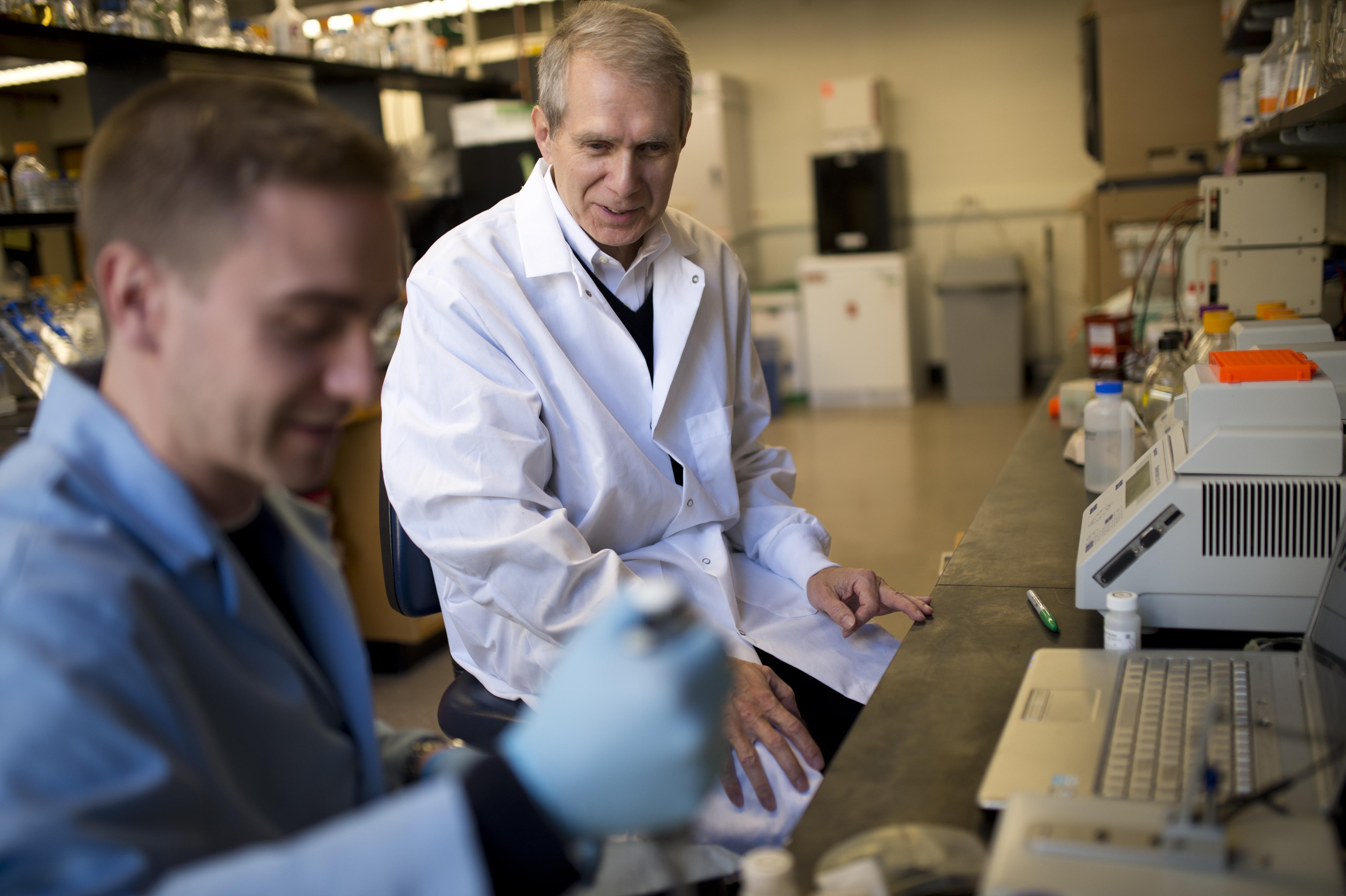by Thea Singer
It’s one thing to grow bacteria in a test tube, perform a screen in the lab, and find a mutation in the pathogen’s genes. It’s a whole other thing, and much rarer, to find the exact same mutation in nature—in this case, in E. coli in urine samples from some 500 patients suffering from relapsing urinary tract infections.
The confluent discovery, by University Distinguished Professor Kim Lewis and his colleagues, was published on Wednesday in the journal Nature. It could put people with relapsing UTIs on the fast track for a new therapeutic regimen that Lewis described in an earlier paper.
“We took a large collection of E. coli isolates from patients with relapsing UTIs,” explains Lewis, who is director of the Antimicrobial Discovery Center. “And we found that quite a number of those isolates had exactly the same mutation—in a gene called hipA—that we and other scientists have seen in test-tube experiments.”
She was delighted by what she saw: hipA leapt to the fore in both populations.Pooja Balani, a doctoral student in Lewis’ lab at the time of the study and a first author of the paper, spent countless hours performing a genetic screen with then Northeastern research assistant professor Marin Vulić and poring over both test-tube cultures of E. coli and patients’ UTI isolates, in search of hipA mutations.
The “persister” breakthrough
An estimated 150 million UTIs occur each year worldwide, accounting for $6 billion in healthcare costs, according to the American Urological Association. The bacterium E. coli is responsible for the majority of them. Antibiotics are the standard treatment, but often the infection returns when treatment is stopped.
Lewis’ lab had spent years trying to learn why, and in 2001 published a paper that brought the answer into the light of day: A subpopulation of bacterial cells called “persisters” was conferring antibiotic “tolerance.”
Antibiotic tolerance is distinct from antibiotic “resistance,” which occurs when a pathogen acquires a genetic mutation that allows it to code for a protein that destroys the antibiotic. Think of it this way: With resistance, the bacteria brandish a new killer weapon. With tolerance, the bacteria hide in a foxhole, waiting till the enemy has fled. Then they come out and multiply.
Bacteria are one-cell organisms. To reproduce, they simply divide: One cell becomes two cells, and so on, until an army of progeny infect the host—here, a person’s urinary tract. But sometimes the division results in one active bacteria cell, which continues to grow and divide, and one that is alive but stops growing—it is dormant, existing in what Lewis calls “a sporelike state.” That is a persister cell.
“There’s a small subpopulation of persisters that are formed by all pathogens we’ve studied so far,” says Lewis. Because antibiotics attack only actively functioning bacterial cells, he says, persisters escape the onslaught.
“Persisters are like a bet-hedging defense strategy for bacteria,” says Balani. “Ultimately they save the population.”
From the lab to the bedside
Collaborators in the new study included Maria A. Schumacher, Richard G. Brennan, and their students at Duke University School of Medicine, who analyzed the structure of hipA to determine how the mutation increased production of persister cells. What they found was a molecular balancing act gone awry.
The hipA gene codes for a protein—a toxin. The toxin is usually held in check by another protein, an antitoxin, that is coded for by another gene, hipB. Toxin-antitoxin gene pairs are “scattered around the chromosomes of all bacteria we know of,” says Lewis. A mutation in either gene, however, can throw the balance off kilter. Hence, the more toxin produced by hipA, the more likely the cell will shut down—that is, become a persister. “The hipA mutation gives rise to about 1,000 times more persisters than a gene without it,” says Lewis.
Knowing this genetic mechanism could enable clinicians to customize treatment for relapsing UTIs. “You can track whether your patient has E. coli with a hipA mutation, and if so, introduce a pulse-dosing regimen,” says Lewis, citing his earlier paper about pulse dosing and the pathogen that causes Lyme disease.
Pulse dosing, he says, is straightforward: You give the patient an antibiotic and it kills all the growing cells. Then the persister cells start “waking up.” But before they can divide to form a new population, you hit them with the antibiotic again.
“In a test tube, if you repeat this a couple of times, you can completely eradicate the population,” Lewis says. “I believe that the same thing can be done in people.”

University Distinguished Professor Kim Lewis

